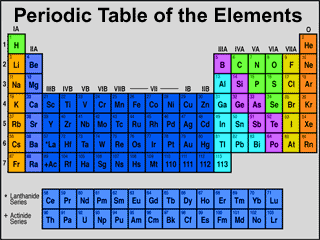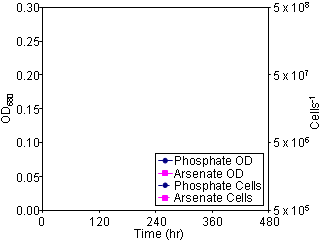What's Wrong With NASA's Arsenic-Eating Bacteria Study?

Introduction
The main axiom of biology is that all life forms use six major atoms in their chemical designs - carbon, hydrogen, nitrogen, oxygen, phosphorus and sulfur. However, NASA announced that they had "found" a bacterium that used arsenic in place of phosphorus. It was not surprising that a bacterium would incorporate arsenic into its biomolecules - even humans can do that. Arsenic lies just below phosphorus on the periodic table of elements, meaning that it is chemically similar to other elements in its column. What is surprising is that doing so did not kill the bacteria. With virtually every other life form, incorporating arsenic in one's biomolecules results in death, since the resulting arsenate-containing molecules are inherently unstable.1 How did these bacteria escape sure death? Did they really "eat" arsenic?
What did NASA "find"?
Authors of the study2 took sediment from California's Mono Lake, an alkaline, salty lake containing 88 mg of phosphate and 200 µM of arsenic per liter. The sediment was grown in similar defined medium containing 10 mM glucose as a carbon source, 0.8 mM NH4SO4 as a nitrogen and sulfur source, and an assortment of the vitamins and trace minerals that might be needed for bacterial growth. Although the basic medium had no added phosphate or arsenate, contamination of the ingredients caused it to contain about 3 µM phosphate (PO4) and about 0.3 µM arsenate (AsO4). Bacteria, strain GFAJ-1 of the Halomonadaceae, were grown in this media supplemented with arsenate or phosphate at various concentrations. Authors of the study grew bacteria from the sediment in increasing amounts of arsenic, eventually settling on 40 mM (which is a lot). In reality, NASA did not just "find" an arsenic-tolerating bacterium, but they selected for it. Whether such bacteria exist naturally in Mono Lake (or anywhere else) is still a question.
Arsenic in biomolecules?
The authors grew GFAJ-1 in 75As-containing medium and isolated DNA and cellular extracts using Chloroform-Phenol (an old-fashioned technology). The vast majority of the arsenic was found in the phenol layer (which contains proteins and small molecular weight compounds). The aqueous layer was run on a gel, with the band being cut out and dried before being analyzed by NanoSIMS. The data showed increased arsenic in arsenate-grown bacteria, although there was only a two-fold difference compared with phosphate-grown bacteria. The main concern is that the researchers failed to extract the DNA from the gel and purify it on a column (a 15-minute standard procedure these days in molecular biology). Such a procedure would have insured that the DNA was washed of possible external contaminating arsenic.
Growth curve problems
The GFAJ-1 isolate was grown in the presence of phosphate or arsenate and both optical density (OD) and colony forming units (CFU) were determined. Although the curves looked similar in the original figure,3 examining the curves on the same scale shows that not all the curves match. If you look at the blue curves to the right (hover over thumbnail), you can see that the OD and CFU curves for GFAJ-1 grown in phosphate are virtually identical (other then the one outlier point). However, when grown with arsenic, the CFUs plateau at 6 days, whereas the OD continues to increase through 15 days. The fact that arsenate supports 10-fold fewer CFU suggests that there is a rate limiting nutrient in the medium. Other reviews of the data suggest that GFAJ-1 is scavenging the small amount of phosphate available in the "phosphate-free" media. Since the OD continues to increase, the data suggests that bacteria are growing slowly and dying, resulting in a static number of CFUs, but increasing OD. It is possible that the dead bacteria are slowly releasing their phosphate, which living bacteria scavenge. Supportive of this idea is the appearance of the bacteria grown in arsenate - they are larger and more rounded (as opposed to rod-shaped) and contain huge vacuoles. Coupled with the reduced growth rate, these data suggest that GFAJ-1 is very unhappy about growing without adequate phosphate.
What the study doesn't show
NASA hyped the study by announcing a news conference that "will impact the search for extraterrestrial life." NASA speculated that the discovery of an arsenic utilizing bacterium would open the doors to other forms of alien life. The actual Science study does not speculate on the relevance of the findings to possible extraterrestrial life or the origin of life, although this has not stopped other scientists from doing so. Zita Martins, an astrobiologist at Imperial College London, said, "For future space missions that try to detect life, if we are just concerned about the elements we should follow, we always included carbon, oxygen, nitrogen, hydrogen, sulphur and phosphorus. Now we have one more element we should follow."4 Of course, news outlets hyped the discovery immensely, including CNN's claim that "Scientists have discovered a form of bacteria that can thrive on arsenic."5 In reality, the organism did not "thrive," but barely was able to survive.
Conclusion 
In conclusion, sloppy techniques and failure to eliminate all phosphate from the medium leaves open the possibility that GFAJ-1 is just really good at scavenging phosphate from an arsenate containing environment. Since GFAJ-1 grows 3- to 10-fold more slowly in arsenate, it is likely that the bacterium is doing a significant amount of repair activity to fix the problems caused by arsenate incorporation. Some blogs have indicated that arsenate containing DNA is so unstable that NSAS scientists would not be able to isolate intact DNA through the phenol-chloroform extraction procedure the employed, suggesting that the DNA was actually composed of phosphorous and not arsenic. NASA scientists have offered to provide the strain to any other scientist to confirm their data. Regardless of the outcome, the idea that this bacterium is a new form of life that expands the possible forms of carbon life is false. It is clear that GFAJ-1 is an extremophile that has adapted to living in high salt and high arsenate environments. There is no indication that life could originate under those extreme environmental conditions. This page will be updated when more information is available.
Follow-up 1/23/2012
Other researchers did obtain the "arsenic-eating" bacteria and ran additional experiments. As I had predicted, the new studies found no arsenic within the DNA of GFAJ-1.6 Further experiments are planned to examine the role of arsenic in other biomolecules.
Follow-up 7/8/2012
The final, definitive experiments have been published, showing that GFAJ-1 is an arsenate-resistant, phosphate-dependent organism,7 and that it does not incorporate arsenic into its DNA.8
Related Pages 
- NASA Scientist Discovers Alien Life in Meteorites - Again! NOT!
- Cell Membrane-Like Organic Vesicles Formed in Conditions Mimicking Interstellar Clouds?
- Origin of Life Theories: Metabolism-first vs. Replicator-first Hypotheses
- The Origin of Homochirality: A Major Problem for Origin of Life Theories
- Abiogenesis: Is the Chemical Origin of Life a Realistic Scenario?
- Evolution Deception in California State High School Biology Textbook Biology: Principles & Explorations
- Problems with the Origin of Biological Membranes Under Prebiotic Conditions
- Origin of life: latest theories/problems
- The Origin of Life on Planet Earth
- Book Review: Origins of Life: Biblical and Evolutionary Models Face Off
Related Materials 
 Origins of Life:
Biblical and Evolutionary Models Face Off
Origins of Life:
Biblical and Evolutionary Models Face Off![]() by Fazale Rana and Hugh Ross. Probably the single most potent
scientific argument against atheism is the problem with a naturalistic origin of
life. This very problem led me to become a deist as a biology major at USC in
the early 1970's. The problems for atheists have gotten no better since that
time. In fact, the last 30+ years of research have turned up even more problems
than those that existed when I first studied the theories. Fuz Rana (a
biochemist) and Hugh Ross (an astrophysicist) have teamed up to write the
definitive up-to-date analysis of the origin of life. The book examines the
origins of life from the perspectives of chemistry, biochemistry, astronomy,
and the Bible. A biblical creation model is presented along side the
naturalistic models to help the reader decide which one fits the data
better.
by Fazale Rana and Hugh Ross. Probably the single most potent
scientific argument against atheism is the problem with a naturalistic origin of
life. This very problem led me to become a deist as a biology major at USC in
the early 1970's. The problems for atheists have gotten no better since that
time. In fact, the last 30+ years of research have turned up even more problems
than those that existed when I first studied the theories. Fuz Rana (a
biochemist) and Hugh Ross (an astrophysicist) have teamed up to write the
definitive up-to-date analysis of the origin of life. The book examines the
origins of life from the perspectives of chemistry, biochemistry, astronomy,
and the Bible. A biblical creation model is presented along side the
naturalistic models to help the reader decide which one fits the data
better.
References 
- B. Rosen. 2002. FEBS Lett. 529: 86.
Wolfe-Simon, F., P. C. W. Davies, A. D. Anbar. 2009. Int. J. Astrobio. 8: 69. - Felisa Wolfe-Simon,1,2* Jodi Switzer Blum. 2010. A Bacterium That Can Grow by Using Arsenic Instead of Phosphorus. Science doi:10.1126/science.1197258.
- Data from the original figure was extracted and replotted using Microsoft
Excel. The Excel worksheet (
 148 KB) is available.
148 KB) is available. - Alok Jha. NASA reveals bacteria that can live on arsenic instead of phosphorus. Guardian News and Media Limited. Thursday 2 December 2010.
- Arsenic-feeding bacteria find expands traditional notions of life. CNN December 02, 2010.
- Erika Check Hayden. Study Fails to Confirm Existence of Arsenic-Based Life. Scientific American, January 23, 2012.
- Tobias J. Erb, Patrick Kiefer, Bodo Hattendorf, Detlef Günther, and Julia A. Vorholt. 2012. GFAJ-1 Is an Arsenate-Resistant, Phosphate-Dependent Organism. Science doi:10.1126/science.1218455.
- Marshall Louis Reaves, Sunita Sinha, Joshua D. Rabinowitz, Leonid Kruglyak, and Rosemary J. Redfield. 2012. Absence of Detectable Arsenate in DNA from Arsenate-Grown GFAJ-1 Cells. Science doi:10.1126/science.1219861.
http://www.godandscience.org/evolution/nasa_arsenic_bacteria.html
Last updated July 9, 2012




